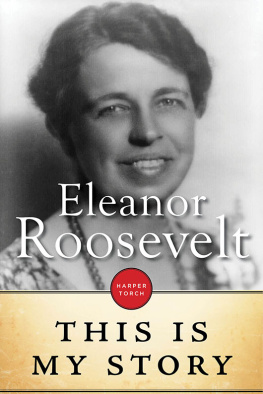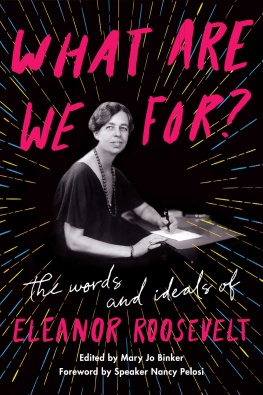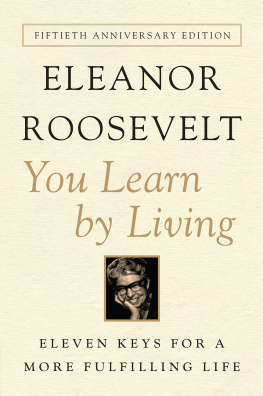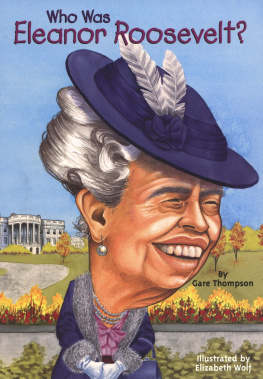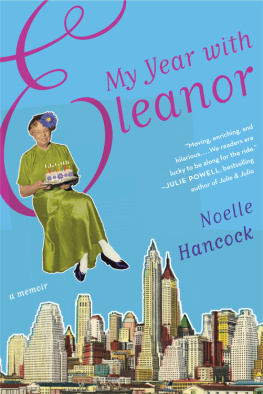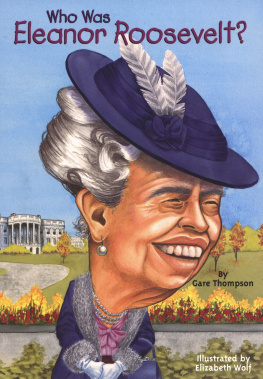Eleanor Roosevelt - Its Up to the Women
Here you can read online Eleanor Roosevelt - Its Up to the Women full text of the book (entire story) in english for free. Download pdf and epub, get meaning, cover and reviews about this ebook. year: 2017, publisher: PublicAffairs, genre: Home and family. Description of the work, (preface) as well as reviews are available. Best literature library LitArk.com created for fans of good reading and offers a wide selection of genres:
Romance novel
Science fiction
Adventure
Detective
Science
History
Home and family
Prose
Art
Politics
Computer
Non-fiction
Religion
Business
Children
Humor
Choose a favorite category and find really read worthwhile books. Enjoy immersion in the world of imagination, feel the emotions of the characters or learn something new for yourself, make an fascinating discovery.

- Book:Its Up to the Women
- Author:
- Publisher:PublicAffairs
- Genre:
- Year:2017
- Rating:3 / 5
- Favourites:Add to favourites
- Your mark:
- 60
- 1
- 2
- 3
- 4
- 5
Its Up to the Women: summary, description and annotation
We offer to read an annotation, description, summary or preface (depends on what the author of the book "Its Up to the Women" wrote himself). If you haven't found the necessary information about the book — write in the comments, we will try to find it.
Its Up to the Women — read online for free the complete book (whole text) full work
Below is the text of the book, divided by pages. System saving the place of the last page read, allows you to conveniently read the book "Its Up to the Women" online for free, without having to search again every time where you left off. Put a bookmark, and you can go to the page where you finished reading at any time.
Font size:
Interval:
Bookmark:
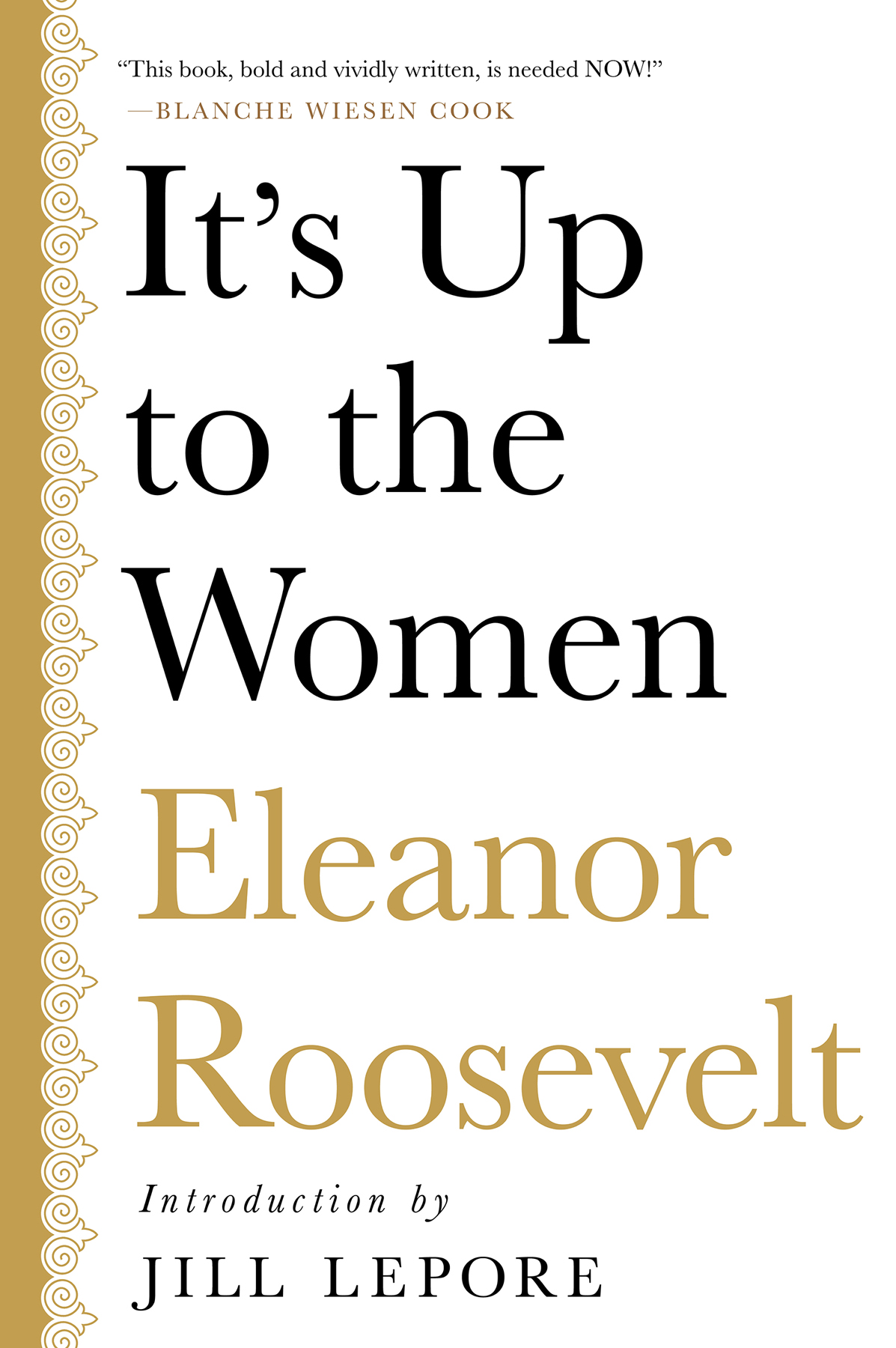
Copyright 2017 by the Estate of Anna Eleanor Roosevelt
Introduction copyright 2017 by Jill Lepore
Published by Nation Books, an imprint of Perseus Books, LLC, a subsidiary of Hachette Book Group, Inc.
116 East 16th Street, 8th Floor
New York, NY 10003
Nation Books is a co-publishing venture of the Nation Institute and Perseus Books
All rights reserved. Printed in the United States of America. No part of this book may be reproduced in any manner whatsoever without written permission except in the case of brief quotations embodied in critical articles and reviews. For information, address Perseus Books, 1290 Avenue of the Americas, New York, NY 10107.
Books published by Nation Books are available at special discounts for bulk purchases in the United States by corporations, institutions, and other organizations. For more information, please contact the Special Markets Department at Perseus Books, 2300 Chestnut Street, Suite 200, Philadelphia, PA 19103, or call (800) 810-4145, ext. 5000, or e-mail special.markets@perseusbooks.com.
Designed by Jeff Williams
Library of Congress Control Number: 2017933155
ISBN: 978-1-56858-594-9 (HC)
ISBN: 978-1-56858-595-6 (EB)
E3-20170304-JV-NF
I N the fall of 1932, when Eleanor Roosevelt was teaching American history at a high school for girls, editing a magazine called BabiesJust Babies, and helping her husband in the last weeks of his run for president of the United States by making a gazillion campaign stopsa speech here, a photograph therethe Associated Press assigned a political reporter named Lorena Hickok to follow her around. She is, to use the expression of one of her friends, Hickok wrote, a whirlwind. Roosevelt wore ten dollar dresses, refused the protection of the Secret Service, borrowed friends cars so she could drive herself, and on Sundays scrambled the eggs herself, at the table, in a chafing dish. THE DAME HAS ENORMOUS DIGNITY , Hickok telegrammed the AP one day. SHES A PERSON .
That November, Franklin Delano Roosevelt won forty-two out of forty-eight states in one of the most lopsided elections in American history. His wife celebrated, but she was a reluctant first lady. Eleanor Roosevelt was a new phenomenon in America politics, writes Blanche Wiesen Cook, Eleanors most exhaustive biographer. Born in New York in 1884, Eleanor Roosevelt was orphaned as a child. She married in 1905; FDR was her fifth cousin. The marriage was an unhappy one. In 1914, while ER was raising the couples six children, FDR began a passionate affair with his social secretary. Eleanor wanted a divorce; Franklin believed a divorce would ruin his career. They stayed together. She began regularly speaking in public in 1921, after he was struck with polio and she appeared in his stead. By the 1920s, shed become a major figure in Democratic politics, just at a time when women were entering political parties. In 1920, with the ratification of the Nineteenth Amendment, the National American Womens Suffrage Association reinvented itself as the League of Women Voters. The only way to get things in this country is to find them on the inside of the political party, said Carrie Chapman Catt. Roosevelt took that advice to heart, becoming a leader of the Womens Division of the New York State Democratic Party while her husband campaigned and served as governor of the state. By 1928, she was head of the Womens Division of the Democratic National Committee.
Eleanor Roosevelt never wanted her husband to run for president. When he won, she told friends she might divorce him rather than lose her independence to the honorific role of first lady. I shall have to work out my own salvation, she said. She decided to reinvent the role. What should a first lady really do? Not host parties, she thought. She went on a national tour to crusade on behalf of women. She wrote a regular newspaper column. She became a champion of womens rights and of civil rights (in support of racial equality, she was the most outspoken member of her husbands administration). And she decided to write a book. She called it Its Up to the Women. She announced her plan in January 1933, two months before her husbands inauguration. Mrs. Franklin D. Roosevelt, who has been one of the most active women in the country since her husband was elected President, is going to write a 40,000-word book between now and the March inauguration, the Boston Globe announced. Every word will be written by Mrs. Roosevelt herself.
To say that Roosevelts act of writing this book was shocking hardly covers it. In 1933, women rarely spoke in public, held very few public offices, and had barely begun voting. During one of FDRs reelection campaigns, supporters of his opponent wore buttons that read, We Dont Want Eleanor Either. And yet her own supporters were legion. In September 1933, reporter Rita S. Halle watched Eleanor Roosevelt at a conference about how to help the needy through the winter. The first lady told a story about an evicted family sleeping in a house with no windows against the rain, and the baby had gotten sick and died. Halle wrote of ER: Despite a lithe, graceful figure, she is not beautiful. She does not charm by her personal appearance. Yet, as she spoke, the wearied audience uncurved its collective spine until, all over the large room, men and women were sitting forward on their chairs in intent response to the magnetism of her simple sincerity.
Thats a fair account of Its Up to the Women, too, with its earnest charm and flinty steadiness. In giving advice about getting through hard times, Roosevelt called on her study of the past. There have been other great crises in our country and I think if we read our history carefully, we will find that the success of our nation in meeting them was very largely due to the women in those trying times, she wrote. The Hartford Courant called it, accurately enough, a book of general counsel and advice on pretty well everything, from dish-washing to high diplomacy. In chapters on everything from what to cook for dinner to how to make a family budget (spend no more than 38 percent on food and 25 percent on rent), Roosevelt urged women to care for their children and their husbands but not to stint on taking care of business and thinking about politics. Vote, and get a job if you can, she told women. As for children who complain about their mothers working outside the home, and, equally, for husbands who might complain about their wives: They have a right to expect that if they have a problem she will listen to it, but they have no right to expect that she will give up that which she loves and which is constructive and creative work, because they would like to have her home at five oclock instead of at six oclock. The really new deal for the people, Roosevelt said, had to do with women awakening to their civic duties.
Reviews of the book ranged from politely dismissive to politely outraged. In a column titled Mrs. Roosevelts Book, the Christian Science Monitor called it a wholesome, pleasant, kindly effort. Mrs. Roosevelt has always been an independent thinker, the Chicago Tribune averred. Her typewriter has developed no inhibitions since its journey to the White House.
Its Up to the Women was the first book Eleanor Roosevelt wrote. It would not be the last. She hammered at that typewriter, year after year, telling the story of her life and urging women to enter politics for decades before, at the end of her public life, she chaired JFKs Commission on the Status of Women. Can a woman ever be president of the United States? she asked in an essay published in
Font size:
Interval:
Bookmark:
Similar books «Its Up to the Women»
Look at similar books to Its Up to the Women. We have selected literature similar in name and meaning in the hope of providing readers with more options to find new, interesting, not yet read works.
Discussion, reviews of the book Its Up to the Women and just readers' own opinions. Leave your comments, write what you think about the work, its meaning or the main characters. Specify what exactly you liked and what you didn't like, and why you think so.

